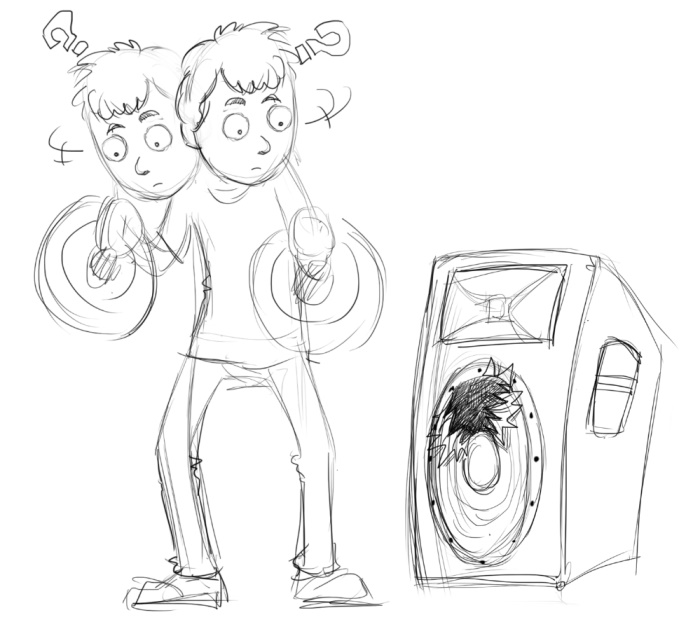- Home
- Questions?
- Foam or rubber surrounds?
Foam or rubber surrounds?
Lately we received a lot of questions about replacing foam speaker surrounds with rubber surrounds. Because answering these questions is a lot of work, and the answer is always the same, we have decided to answer the question here in our shop.

There’s two reasons why the producers of loudspeaker units choose the use of foam surrounds:
- Foam is in general more flexible than rubber, giving the woofer a slightly higher efficiency;
- Foam is cheaper than rubber, lowering the production costs.
This is why many, many speaker units are fitted with foam surrounds. There are some speakers out there that have been fitted with foam as well as rubber surrounds. An example is the Heybrook 1 woofer, produced by VIFA. This HB1 woofer was fitted with a foam surround, but VIFA later on fitted this woofer with rubber surrounds – these woofers were used by others. Another example is the Beovox S35. The original S35 was fitted with a rubber ring, the S35-2 had a similar woofer with a foam surround to improve sound quality. Only in direct A-B comparisons there seems to be a slight difference…. (Source)
According to our experience with refoaming speakers we think that the right (relatively thin) rubber surround can replace a foam surround without degrading performance too much. All the rubber surrounds in our shop are relatively light and thin and can be used to replace foam rings. These rubber surrounds are slightly more expensive (€ 0,50 - € 1,-) but these surrounds have the advantage of lasting much longer than foam rings (count on 20-30 years). But before you replace a foam surround with a rubber one you might ask around for others experiences or contact us.
But…. Rubber surrounds will not last for ever! For instance: rubber rings have the tendency to sag. The weight of the speaker cone will make the ‘upper part’ of the rubber surround sag. This will make the voice coil rub the magnet – bad and dangerous! Woofers from for instance KEF, but also Rogers and others, suffer from this problem. A short term solution is to take the woofer out of the cabinet, turn it 180 degrees (upside down) and put it back. A long term solution is re-aligning the voicecoil and/or replacing the surround.
Another problem with rubber surrounds, especially the ones with a lot of softeners, is the surrounds might harden and crack (break) once the majority of the softeners evaporated. Bang and Olufsen Beolab 3.25 inch units tend to have this this problem, and so do the (grey) rubber surrounds in the B&W Sorrento series. Replacement of the rubber surrounds is the only solution here.
Beware:
We think there are exceptions to the rule you can replace foam surround with their rubber siblings! Relatively large woofers (> 8 inch) with relatively light speaker cones will become to heavy when fitting rubber surrounds. For these woofers we do not offer rubber surrounds. Also, the fitting of relatively thick rubber surrounds to replace foam surrounds is not recommended.
Supplement:
Based on our experience and customer response we recommend the following cases to seriously consider to replace the foam surrounds with rubber surrounds because the durability of the foam surrounds in these circumstances will be beow par:
- When using the speakers in the vicinity of a sea or ocean, think of a distance to two to five kilometers. The salty sea air will very quickly affect he foam surrounds .
- When using the speakers in humid, tropical conditions. Customers who bought foam surrounds with us (several years ago) now return for rubber edges.
- When using speakers outside, think of the Bose 901 which is generally used in markets / fairs, one day in the rain, the next day in the heat and later when it freezes. The weather conditions will affect foam surrounds very quickly.
© Good Hifi VOF, 15-07-2021


 Nederlands
Nederlands
 Deutsch
Deutsch